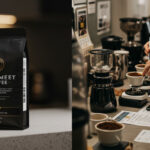
What Roast Level is Considered Traditional?
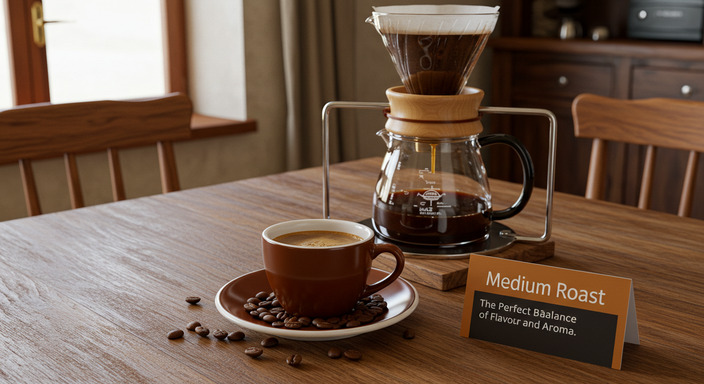
Table of Contents
ToggleThe Essence of Traditional Coffee
Defining Traditional Coffee Roast Levels
Coffee is more than just a beverage—it’s a ritual, a comfort, and a connection to generations past. At the heart of this tradition lies the roast level, which shapes the flavor, aroma, and soul of every cup. Traditional coffee roast levels are typically categorized into three main profiles:
- Light Roast: Bright and lively, preserving the bean’s natural acidity and floral notes—often favored by modern craft roasters but historically less common in classic American brewing.
- Medium Roast: Balanced and approachable, with a fuller body and slight caramel sweetness—a middle ground embraced by many home brewers.
- Dark Roast: Bold and intense, with deep chocolatey or smoky flavors—the roast most synonymous with traditional coffee in American culture.
Why Dark Roast Stands as the Classic Choice
Walk into any old-school diner, or open a bag of coffee from a century-old brand, and you’ll likely encounter the rich, robust character of a dark roast. This signature depth wasn’t just an accident of taste—it became the standard for practical and cultural reasons:
- Longer Shelf Life: In the early days of coffee distribution, dark roasts held their flavor longer during transport and storage.
- Consistent Strength: The boldness cut through milk and sugar, making it ideal for the all-day “cup of joe” culture.
- Equipment-Friendly: It brewed well in percolators and drip machines, the staples of 20th-century American kitchens.
As coffee historian Margaret Jenkins once noted:
“Dark roast wasn’t just a preference—it was the taste of homes, factories, and highways. It fueled the rhythm of daily life.”
The Nostalgic Appeal of Traditional Coffee
There’s something undeniably comforting about the familiar scent of dark roast filling a kitchen at dawn—a sensory anchor to simpler times. Traditional coffee evokes:
- Family Moments: The shared pot at Sunday breakfasts or late-night conversations at the Formica table.
- Cultural Touchstones: From truck-stop refills to the endless cup at grandma’s house, dark roast was the backdrop to American life.
- A Timeless Ritual: The hiss of a stovetop percolator or the measured scooping of grounds ties us to generations who found warmth in the same simple pleasure.
While specialty coffee trends come and go, the embrace of traditional roast levels endures—not out of habit, but because some flavors become home.
The History of Traditional Coffee Roasts
Origins of Dark Roast Coffee in Europe
The tale of dark roast coffee begins centuries ago in the heart of Europe. As coffee made its way from the ancient coffee forests of Ethiopia to the bustling coffeehouses of Vienna and Paris, Europeans developed a taste for bold, robust flavors. The process of roasting coffee beans to a deep, rich hue became an art form, prized for its ability to enhance the coffee’s body and aroma. This preference for dark roast coffee quickly spread across the continent, becoming a hallmark of European coffee culture.
How Dark Roast Became a Staple in American Diners and Homes
When coffee crossed the Atlantic to America, it brought with it the European tradition of dark roasting. However, it was in the humble diners and family kitchens of the United States that dark roast truly found its home. The strong, invigorating flavor of dark roast coffee became synonymous with the American morning ritual—whether it was served in a chunky mug at a roadside diner or brewed in a percolator on a stovetop. Its ability to pair perfectly with hearty breakfasts and late-night conversations cemented its place in the hearts of Americans.
The Role of Traditional Roasts in Cultural Coffee Rituals
Traditional coffee roasts, particularly dark roasts, have long been woven into the fabric of cultural coffee rituals around the world. From the Italian espresso to the Turkish cezve, these roasts have been central to moments of connection and reflection. In many cultures, the act of brewing and sipping a dark roast coffee is more than just a daily routine—it’s a cherished tradition that brings people together, fostering warmth and camaraderie in every cup.
“Coffee is a language in itself. It speaks of tradition, of moments shared, and of the simple joy of a perfectly brewed cup.”
As we explore the history of traditional coffee roasts, it’s clear that their enduring appeal lies not just in their flavor but in the stories and memories they carry with them. Whether enjoyed in a bustling café or the quiet of a morning kitchen, traditional roasts continue to be a timeless tribute to the art of coffee.
Flavor Profile of Traditional Roasts
Bold, Rich, and Smoky Notes of Dark Roast
When it comes to traditional coffee, few things are as iconic as the bold, rich, and smoky flavors of a dark roast. This roast level is often associated with strength and depth, offering a robust taste that lingers on the palate. The dark roast’s smoky undertones are a result of the beans being roasted at higher temperatures, which caramelizes the sugars and oils within. This process creates a satisfyingly intense flavor profile that has been cherished for generations. Whether enjoyed in a steaming cup on a chilly morning or as an afternoon pick-me-up, the dark roast’s hearty character never fails to deliver.
Balancing Bitterness and Depth
One of the hallmarks of traditional roasts is their ability to strike a perfect balance between bitterness and depth. While the dark roast’s deep flavor might come across as bitter to some, it’s this very bitterness that complements its richness, creating a harmonious taste experience. The key lies in the roasting process, where skilled roasters carefully monitor the beans to ensure they reach the ideal level of caramelization without crossing into overly burnt territory. This balance makes traditional roasts versatile, pairing beautifully with cream, sugar, or simply savored black. It’s this timeless equilibrium that keeps coffee lovers coming back for more.
Why These Flavors Resonate with Coffee Lovers
For many, the flavors of traditional roasts evoke a sense of comfort and familiarity. They remind us of early mornings at the kitchen table, late-night conversations in cozy diners, or cherished family gatherings where coffee was always at the center. The boldness of a dark roast offers a sense of reliability—a steady companion in the rhythm of daily life. Moreover, these flavors connect us to cultural roots, as traditional roasting methods have been passed down through generations, preserving the essence of what makes coffee so special. It’s not just about the taste; it’s about the memories and emotions that these flavors bring to the surface.
- Boldness: A hallmark of traditional roasts, offering a robust and intense flavor.
- Richness: Deep, caramelized notes that satisfy the palate.
- Smokiness: A comforting undertone that adds complexity.
“The first sip of a traditional dark roast is like coming home—familiar, comforting, and deeply satisfying.”
Traditional Roast in Daily Routines
The Role of Dark Roast in Morning Rituals
For many, the day doesn’t truly begin until the rich aroma of a dark roast fills the air. This bold, full-bodied brew is the cornerstone of morning rituals across America, offering a robust wake-up call that energizes and comforts in equal measure. Dark roast coffee is more than just a beverage—it’s a promise of productivity and a moment of quiet reflection before the chaos of the day unfolds. Its deep, smoky notes and slight bitterness make it the perfect companion for those early hours when the world is still waking up.
How Diner-Style Coffee Embodies Comfort and Simplicity
There’s something inherently comforting about the simplicity of diner-style coffee. Brewed in large batches and served in thick, ceramic mugs, this quintessential American staple is a testament to the power of uncomplicated pleasures. Whether it’s paired with a stack of pancakes or enjoyed on its own, diner coffee evokes a sense of nostalgia and warmth. It’s a reminder of lazy Sunday mornings, roadside stops on long road trips, and the timeless charm of a classic American diner. Its straightforward flavor profile—smooth, mild, and approachable—makes it universally appealing.
Why Traditional Roasts Are a Symbol of Reliability
In a world that’s constantly evolving, traditional roasts stand as a symbol of reliability. Their consistent flavors and time-tested brewing methods offer a sense of familiarity that’s hard to find elsewhere. Whether it’s the comforting routine of a morning dark roast or the dependable simplicity of diner coffee, these traditional brews anchor us in a fast-paced life. They remind us that some things—like the ritual of enjoying a well-brewed cup of coffee—are worth preserving.
Brewing Methods for Traditional Roasts
Best Brewing Techniques to Enhance Dark Roast Flavors
Traditional dark roasts, with their bold and robust profiles, deserve brewing methods that highlight their depth and richness. Water temperature is crucial—aim for 195°F to 205°F to extract the full spectrum of flavors without bitterness. Grind size also plays a pivotal role; a medium-coarse grind works best for most methods, ensuring a balanced extraction. Avoid over-extraction by keeping brew times in check, as dark roasts can quickly turn bitter if steeped too long.
Classic Methods: Drip Coffee and French Press
For many, the drip coffee maker is the heart of the morning ritual. Its simplicity and consistency make it a favorite for brewing traditional roasts. Use a high-quality paper filter to reduce oils and sediment, resulting in a clean, smooth cup. Alternatively, the French press offers a fuller-bodied experience, allowing the natural oils of dark roasts to shine. Steep for 4 minutes, then press slowly to avoid over-extraction and enjoy a rich, textured brew.
Tips for Achieving the Perfect Cup of Traditional Coffee
- Use fresh, high-quality beans: Traditional roasts are best enjoyed when the beans are freshly roasted and ground just before brewing.
- Measure carefully: A ratio of 1 to 2 tablespoons of coffee per 6 ounces of water ensures a balanced flavor.
- Experiment with water quality: Filtered water can make a noticeable difference in taste, as impurities can mask the coffee’s natural flavors.
- Pre-warm your equipment: Rinsing your French press or drip machine with hot water before brewing helps maintain the ideal temperature.
“Coffee is a language in itself, and traditional roasts speak of heritage, warmth, and comfort.”
Why Traditional Roasts Stand the Test of Time
The Enduring Popularity of Dark Roast Coffee
Dark roast coffee, with its rich, bold flavor and unmistakable aroma, has remained a steadfast favorite for centuries. Its deep, smoky notes evoke a sense of comfort and familiarity, making it a go-to choice for those who crave a reliable and satisfying cup. Whether it’s the cornerstone of a morning ritual or the perfect accompaniment to dessert, dark roast coffee has a way of grounding us in the present while linking us to the past.
How Traditional Roasts Connect Generations
Traditional roasts, like dark roast, are more than just beverages—they are cultural touchstones. For many families, the act of brewing and sharing coffee has been a cherished tradition passed down through generations. Grandparents reminisce about the same coffee they enjoyed in their youth, while parents and children bond over its timeless appeal. It’s a thread that weaves through decades, connecting us to our roots and to one another.
The Simplicity and Comfort They Bring to Modern Life
In a world that often feels fast-paced and overwhelming, traditional roast coffee offers a moment of uncomplicated solace. Its simplicity is its strength—no fancy techniques, no elaborate menus, just a straightforward, honest brew. Whether enjoyed in the quiet of a morning kitchen or the bustling atmosphere of a diner, it reminds us to slow down and savor the little things. It’s a comforting constant in an ever-changing world.
Celebrating Traditional Coffee Today
In a world filled with ever-evolving coffee trends, there’s something deeply comforting about returning to the roots of traditional coffee. Whether it’s the rich aroma of a dark roast or the smooth simplicity of a medium brew, these classic styles have stood the test of time. Let’s explore how to bring the essence of traditional coffee into your daily life, discover local gems that honor these timeless roasts, and share the joy of coffee heritage with others.
Incorporating Traditional Roasts into Your Coffee Routine
Traditional coffee roasts—whether light, medium, or dark—offer a sense of familiarity and warmth that can elevate your daily ritual. Here are a few ways to weave them into your routine:
- Start your day with a classic: Brew a medium roast to enjoy a balanced flavor profile that’s neither too acidic nor too bold—perfect for kickstarting your morning.
- Experiment with brewing methods: Try a French press or pour-over to highlight the nuanced flavors of a light roast or the deep, smoky notes of a dark roast.
- Pair with simple pleasures: Enjoy your traditional roast with a slice of freshly baked bread or a warm pastry to enhance the experience.
Remember, the beauty of traditional coffee lies in its simplicity. You don’t need elaborate techniques or fancy equipment—just good beans and a love for the craft.
Exploring Local Coffee Shops That Honor Classic Roasts
While large coffee chains dominate the scene, there’s a growing appreciation for local coffee shops that celebrate traditional roasting methods. These often follow these principles:
- Small-batch roasting: Many local roasters focus on quality over quantity, ensuring each batch is crafted with care.
- Time-honored techniques: From drum roasting to artisanal blends, these shops often preserve methods that have been passed down through generations.
- A focus on origins: Traditional roasts often highlight the unique characteristics of beans from specific regions, offering a journey through coffee’s cultural roots.
Take time to explore your neighborhood or city. You might just find a hidden gem that serves up a cup of coffee reminiscent of the past.
Sharing the Joy of Traditional Coffee with Others
Traditional coffee is more than a drink—it’s a shared experience. Here’s how you can spread the love:
- Host a coffee tasting: Invite friends or family to sample different roasts and share their thoughts. It’s a fun way to introduce others to the world of traditional coffee.
- Gift a bag of beans: Share your favorite traditional roast with someone special, paired with a handwritten note explaining why you love it.
- Teach the next generation: Pass down your knowledge and appreciation for traditional coffee to younger family members, keeping the legacy alive.
By sharing these moments, you’re not just celebrating coffee—you’re fostering connections and preserving a piece of cultural history.
FAQs About Traditional Coffee
What roast level is considered traditional? Medium roasts are often considered the most traditional, offering a balance of flavor and aroma. However, light and dark roasts also have deep historical roots in different cultures. How can I identify a high-quality traditional roast? Look for beans that are freshly roasted, have a consistent color, and come from reputable roasters. The aroma should be rich and inviting. Can I enjoy traditional coffee with milk or sugar? Absolutely! While traditional coffee is often enjoyed black, adding milk or sugar is a matter of personal preference and can enhance the experience.
As you sip your next cup of traditional coffee, take a moment to appreciate its timeless charm. Whether you’re enjoying it alone or sharing it with others, these roasts remind us of the simple joys and rich heritage that coffee brings to our lives.
is an editor at Coffee With Finance and a true coffee enthusiast. He explores roasts, flavors, origins, and brewing methods, sharing stories that captivate both beginners and experts. Petter believes great coffee sparks meaningful moments—and that includes simple, jargon-free talks about personal finance. His content blends aroma, flavor, and insight, making each coffee break an inspiring and enriching experience.


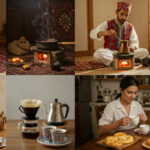










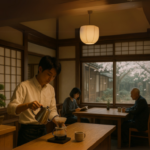




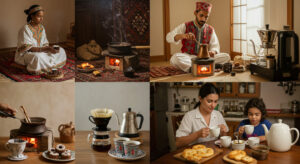



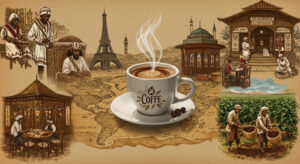

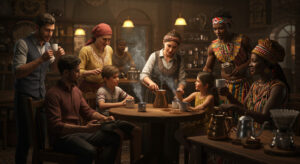
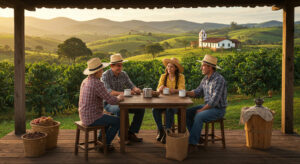

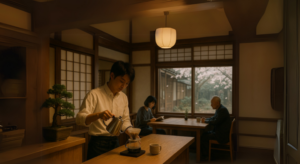
Post Comment